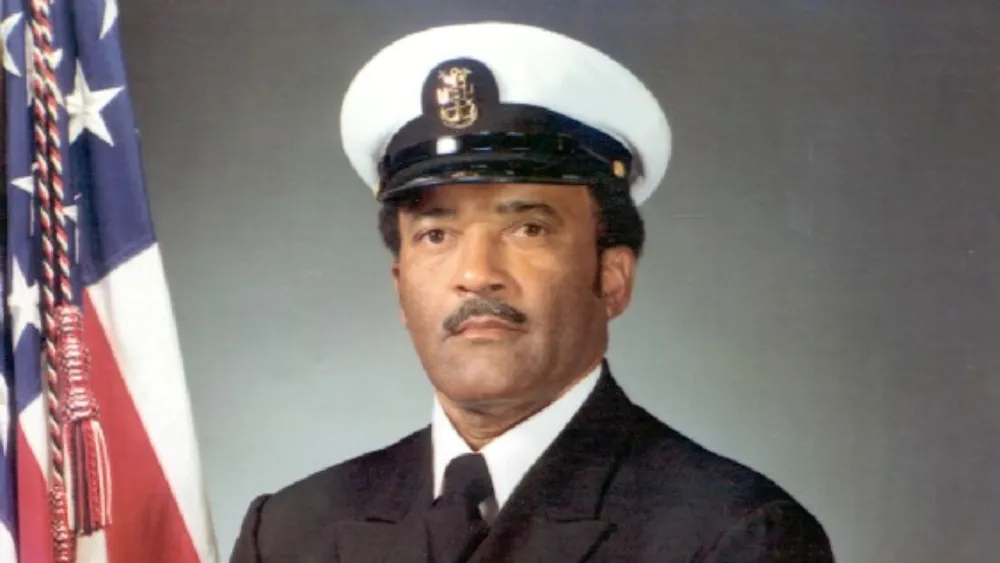Most people have heard of legendary military figures who went down in history for their battlefield feats. But few realize that one of the most inspiring heroes in the U.S. Navy never fired a weapon in combat. His name was Carl Brashear — the first African American master diver in Navy history and the first amputee to return to full active duty. His story didn’t just break racial and physical barriers — it redefined the very meaning of perseverance.
The first time I heard Carl Brashear’s name was by pure accident, watching “Men of Honor.” I had no idea it was based on a true story. When the film ended, I sat there in complete silence. I started looking up who he really was — and that’s when I realized his life was far more impressive than any movie script.
Humble Beginnings, Unshakable Ambition
Carl Maxie Brashear was born in 1931 in Tonieville, Kentucky, in the deeply segregated American South. One of eight children in a struggling farming family, he dropped out of school after the seventh grade to help at home. But even then, he had a spark — a dream that reached far beyond the limitations around him.
In 1948, he enlisted in the U.S. Navy, where African Americans were often confined to low-ranking service roles. But Carl wasn’t interested in mopping floors — he had his eyes set on becoming a U.S. Navy diver, one of the most elite and dangerous roles in military service.
At the time, there had never been a Black Navy diver. The system wasn’t built for him. And yet, he pushed forward.
Facing Discrimination Head-On
Enrolling in the Navy Diving School was already a monumental task — even more so for a Black man in the 1950s. Carl Brashear faced open hostility, racism from instructors, sabotage from classmates, and institutional resistance at every turn.
He failed the diving test multiple times. Not because he wasn’t capable — but because he wasn’t wanted. Still, he trained harder, endured the abuse, and came back again and again. In 1954, he made history as the first African American to graduate from the U.S. Navy Diving School.
What impacted me most was how he kept fighting even after losing his leg. I’ve had times in my life where I felt completely defeated, without energy or hope. Reading how he trained with a prosthetic leg, how he refused to accept “no” as an answer, made me reevaluate everything in my life.

The Accident That Should Have Ended His Career
In 1966, while working to recover a lost nuclear bomb off the coast of Spain, Carl was struck by a loose metal pipe aboard a Navy ship. The blow shattered his leg beyond repair. After multiple surgeries, he made the bold decision to amputate his leg to speed up recovery — not to retire, but to get back to work.
To many, losing a leg would mean the end of a diving career. But for Carl, it was just one more obstacle.
Carl Brashear trained relentlessly. He ran with his prosthetic and practiced underwater drills. His determination defied medical expectations and military protocol. In 1968, just two years after the amputation, he became the first amputee in U.S. Navy history to return to full active duty.
Leaving a Legacy Forged Under Pressure
Carl Brashear didn’t just return — he excelled. Over the next decade, he completed over 1,200 dives, became a diving instructor, and inspired countless sailors. In 1979, he retired with the rank of Master Chief Boatswain’s Mate, the highest enlisted rank possible.
His legacy reached beyond the Navy. The 2000 film Men of Honor, starring Cuba Gooding Jr. and Robert De Niro, introduced his story to the world. Although dramatized in parts, the film captured the core truth: Carl Brashear was a man who refused to be defined by limits — racial, physical, or otherwise.
Since then, I keep a photo of him on my desk. Not as a mythical hero, but as someone who reminds me that the only real barrier is in my mind. Thanks to him, I’ve learned that giving up is never an option. Whenever I’m having a bad day, I read his story again. It always brings me back to focus.
His Story Still Matters Today
Carl Brashear passed away in 2006, but his influence is alive and well. His uniform, diving equipment, and personal timeline are preserved at the Naval Undersea Museum. His voice, telling his story in his own words, is featured in the U.S. Naval Institute’s Oral Histories Project, offering a deeply human portrait of resilience and strength.
In those recordings, he shares the mindset that carried him through life: “Don’t let anybody tell you you can’t do something.” For Carl, this wasn’t just advice — it was a way of life.
Lessons That Transcend the Military
Carl Brashear’s journey isn’t only relevant to sailors or soldiers. In a time when people around the world are struggling with economic hardship, discrimination, health issues, and self-doubt, his example is more valuable than ever.
His story teaches us that greatness isn’t about perfect conditions. It’s about refusing to surrender when the world tells you to quit. It’s about showing up, again and again, no matter how hard it gets.
Whether you’re climbing the ranks in a career, battling personal limitations, or simply trying to survive another day — Carl’s example reminds us that perseverance is the ultimate weapon.
Final Thoughts
Carl Brashear’s life is more than a historical anecdote — it’s a roadmap for human resilience. He broke the Navy’s racial barrier. Also, he smashed the assumptions about physical disability. He proved that character, not circumstances, defines a person’s true value.
The first time I read about how he passed every physical test with a prosthetic leg — and didn’t accept any exceptions or shortcuts — I felt ashamed of every excuse I’d ever made. His story didn’t just inspire me. It made me act. It made me better.
We often talk about heroes as distant, untouchable figures. But Carl Brashear was proof that heroism lives in the small, painful, daily choices — to stand up, push forward, and never accept limits imposed by others.
And maybe the most powerful part of his legacy is this: what he achieved wasn’t supposed to be possible. Until he did it.




